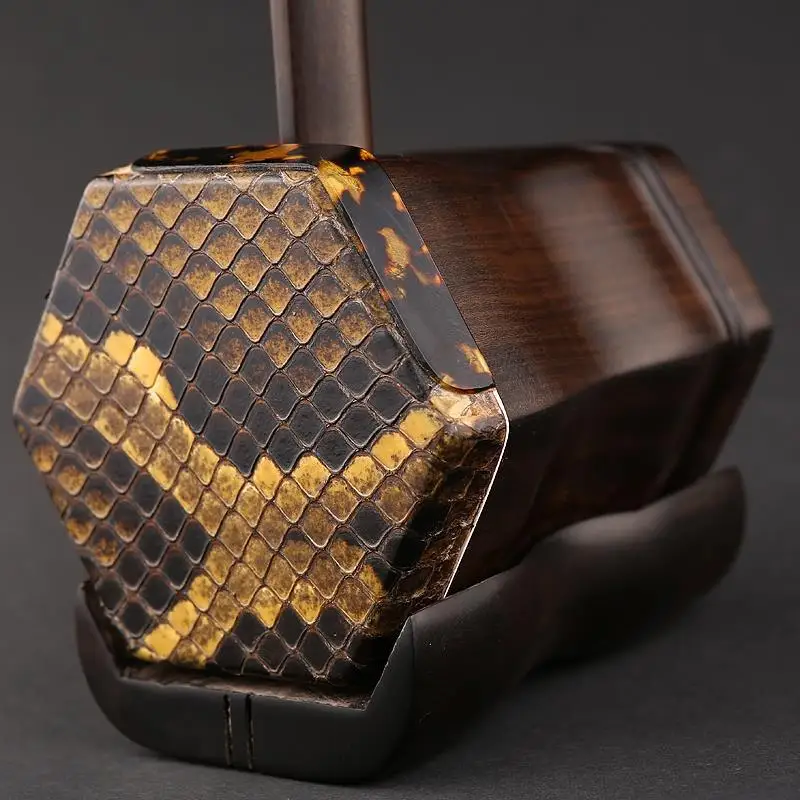

Students often use nylon or 'tetron' strings, which last longer than silk, and are also less expensive.
#2 string chinese instrument professional
However, silk breaks easily over a short time, so this is reserved for professional performances. The material of the strings will depend on the skill of the player. The head of the instrument known as a tenjin may also be protected by a cover. The upper side of the dō (when on the player's lap) is almost always protected by a cover known as a dō kake, and players often wear a little band of cloth on their left hand to facilitate sliding up and down the neck, known as a yubikake. The lowest string is purposefully laid lower at the nut of the instrument in order to create a buzz, a characteristic timbre known as sawari (somewhat reminiscent of the "buzzing" of a sitar, which is called Jivari). The strings are stretched across the body, raised from it by means of a bridge, or koma ( 駒), which rests directly on the taut skin. They are stretched between the pegs at the head of the instrument, and a cloth tailpiece anchored at the end of the rod which protrudes on the other side of the body. The three strings of the shamisen are made of either silk (traditionally) or nylon. The pegs used to wind the strings are long, thin and hexagonal in shape though they were traditionally fashioned out of ivory, due to scarcity and trading regulations regarding and constricting the sale of ivory, many are now constructed from other materials, such as wood and plastic. The neck of the shamisen is a singular rod that crosses the drum-like body of the instrument, partially protruding at the other side of the body and acting as an anchor for the strings. The sao ( 棹), or neck of the shamisen, is usually divided into three or four pieces that fit and lock together, with most shamisen made to be easily disassembled. Contemporary shamisen skins are often prepared with synthetic materials, such as plastic.
#2 string chinese instrument skin
Traditionally, skins were made using dog or cat skin, with cat skin favored for finer instruments : 257–258 though use of animal skins was common throughout the 20th century, use of these skins gradually fell out of favor, starting around the mid 2000s, due to social stigma and the decline of workers skilled in preparing these particular skins. The skin used depends on the genre of music and the skill of the player. The body, called the dō ( 胴), resembles a drum, having a hollow body that is covered front and back with skin, in the manner of a banjo. The neck of the shamisen is fretless and slimmer than that of a guitar or banjo. Its construction follows a model similar to that of a guitar or a banjo, with a neck and strings stretched across a resonating body. The shamisen is a plucked stringed instrument. View B shows the neck and head of a Azumasawari shamisen. View A shows the neck and head of a Yamasawari shamisen. protective piece of leather ( bachigawa, azumasawari).If the injunction is granted, people will not be able to broadcast, perform, share or reproduce Glory to Hong Kong in the city. The government has also sought to ban "any adaptation" of the song or its melody. with the intent to insult the national anthem". The proposed injunction "is to restrain anyone from disseminating or performing, etc, the song with the intention of inciting others to commit secession, or with a seditious intent, or. The government said on Tuesday that its decision to ask the court for a ban came because Glory to Hong Kong was frequently being mistaken for the city's official anthem. It is now all but illegal to sing or play it, after Beijing crushed the protests and passed a sweeping national security law in 2020 to quell political dissent. The song, penned anonymously, first emerged in August 2019 when Hong Kong saw massive and at times violent demonstrations calling for political change.Ī defiant protest anthem, it integrated a key protest slogan - "break now the dawn, liberate our Hong Kong in common breath, revolution of our times" - in its Cantonese lyrics and became the unofficial soundtrack of the demonstrations.

The government has sought an injunction order, which, if granted, would make Glory to Hong Kong the first song to be banned in the city since the former British colony was handed over to China in 1997. HONG KONG: Hong Kong's government said on Tuesday (Jun 6) that it had asked the city's high court to ban the song Glory to Hong Kong, an anthem born out of huge protests in 2019.


 0 kommentar(er)
0 kommentar(er)
